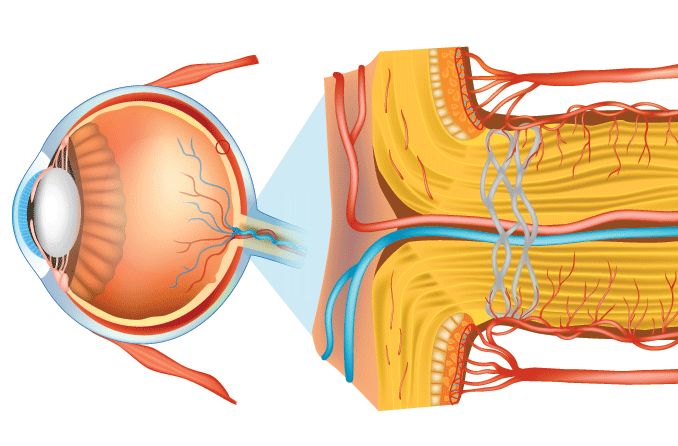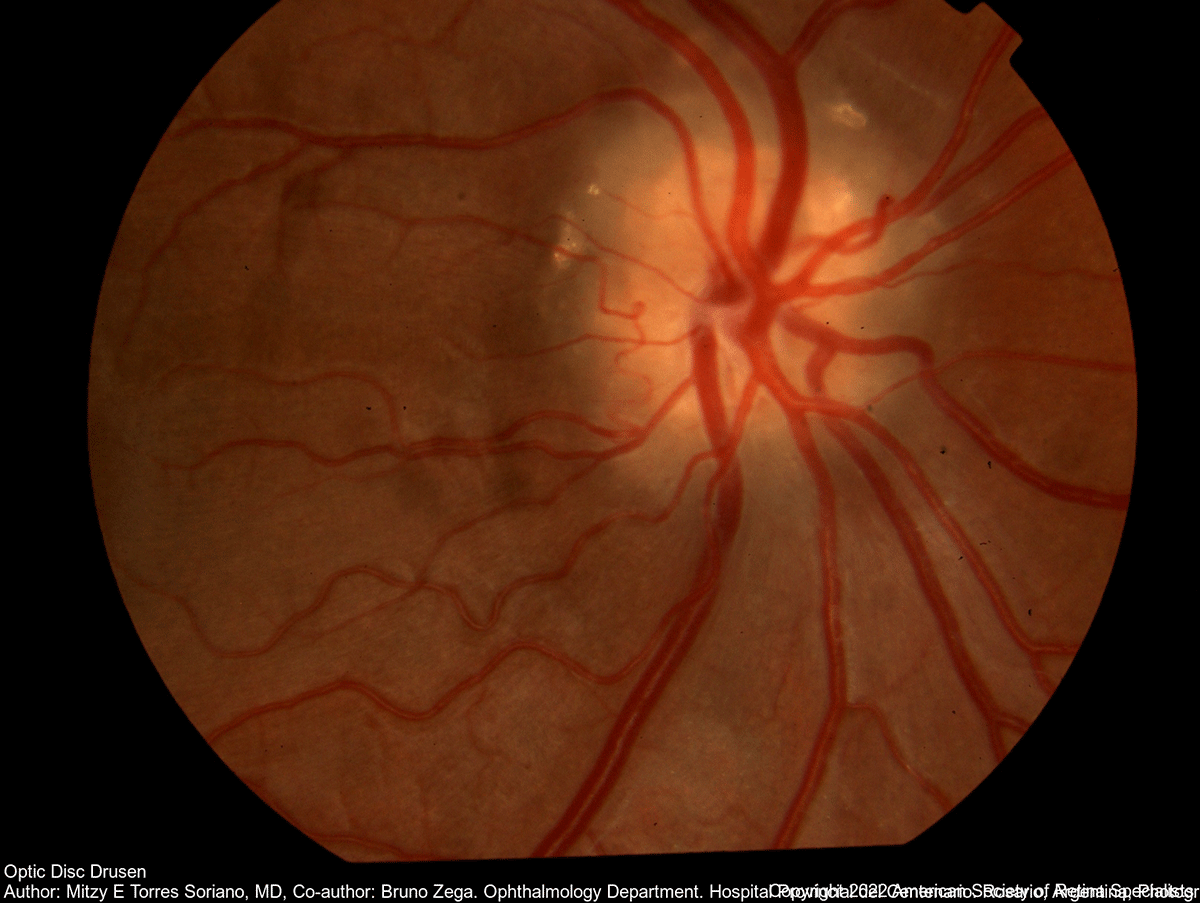Optic nerve drusen: Symptoms, causes and treatment

Optic nerve drusen: Symptoms, causes and treatment
Optic nerve drusen (also called optic disc drusen) occur when there is an atypical buildup of protein and calcium in the optic nerve. This nerve connects the eyes and the brain. The yellowish deposits are usually present in both eyes and are uncommon. They typically do not negatively affect eyesight.
What are the symptoms of optic nerve drusen?
In some cases of optic nerve drusen, patients can experience loss of peripheral (side) vision. There are also instances of temporary flickering or graying of vision.
Most of the time, though, there are no symptoms. People with this condition usually only learn about it during a comprehensive eye exam performed by their eye doctor.
What is the difference between drusen and optic nerve drusen?
Drusen are yellow deposits of lipids and proteins that are found under the retina. (The retina is the light-sensitive tissue that lines the inner surface of the back of the eyeball.) Drusen that is found under the retina can develop as you get older.

Optic nerve drusen [Image credit: This image was originally published in the Retina Image Bank® website. Author: Mitzy E Torres Soriano, MD. Photographer: Mitzy E. Torres Soriano. Retina Department. Hospital Provincial del Centenario. Rosario, Argentina. Optic disc drusen. Retina Image Bank. 2016; Image Number 26681. © the American Society of Retina Specialists.]
If you have a lot of large drusen, it can be a sign that you may be developing age-related macular degeneration (AMD). AMD is a vision problem that can lead to increasingly blurry central vision. It’s important to also note that drusen don’t cause AMD.
Optic nerve drusen are one type of drusen and are referred to as such when the deposits are found in the optic nerve. A healthy optic nerve is round, is pinkish-yellow in color and appears smooth. The nerve’s blood vessels branch outward from the center. Drusen push the optic nerve up, causing the edges to look bumpy and blurry.
Optic nerve drusen can be inherited, but they may also be seen in children who don’t have a family history. Optic nerve drusen are not age-related.
READ MORE: Drusen in the eye
What causes optic nerve drusen?
It’s not entirely clear why drusen form in the optic nerve. Some research has found that children diagnosed with this condition had a narrow sclera canal, which may play a role. The scleral canal is the channel in the back of the eye that the optic nerve passes through.
Can optic nerve drusen cause eye problems?
If you do have optic nerve drusen, your eye doctor will usually be able to see them during your eye exam. However, sometimes optic nerve drusen are buried in the optic nerve where an eye doctor can’t see them. Instead, it looks like the nerve is swollen.
Optic nerve swelling, known as papilledema, is a concern because it can be an indication of high pressure in the brain. Papilledema is a medical emergency and requires immediate attention.
Pseudopapilledema is when the optic nerve looks swollen but isn’t. While optic nerve drusen and papilledema may look similar, eye doctors can tell the difference.
Optic nerve drusen can be associated with other eye conditions, including:
Retinitis pigmentosa – Also known as RP, retinitis pigmentosa is hereditary. It is a group of rare diseases that break down cells in the retina. People with RP have progressive vision loss over time.
Usher syndrome – This rare genetic disease that causes hearing loss and retinitis pigmentosa.
Angioid streaks – Angioid streaks are jagged, irregular streaks in the area around the optic nerve. These reddish-orange, dark brown or gray lines are cracks in Bruch’s membrane, the layer beneath the retina. They can look like the spokes on a wheel. Most people with angioid streaks don’t have any symptoms. But they should wear glasses with polycarbonate lenses to protect against eye injuries.
How common is optic nerve drusen?
Optic nerve drusen are not very common. This condition occurs in approximately 1% to 4% of the general population and affects men and women equally. Since most people with optic nerve drusen don’t have any symptoms, the condition is often undiagnosed.
How do you treat optic nerve drusen?
In most cases, optic nerve drusen do not need to be treated. The majority of patients who have them don’t experience any vision problems. In addition, there is no surgical option to treat optic nerve drusen.
Talk to your eye doctor
If your eye doctor has discovered optic nerve drusen in a prior exam and now you’re concerned about possibly related symptoms, make an appointment today. They can conduct a thorough eye exam and help you figure out what’s going on.
Optic nerve drusen. American Association for Pediatric Ophthalmology and Strabismus. April 2020.
What are drusen? American Academy of Ophthalmology. May 2022.
What are optic nerve drusen? Optometrists Network. October 2021.
Optic nerve head drusen: An update. Neuro-Ophthalmology. April 2018.
Diagnosing optic disc drusen in the modern imaging era: A practical approach. Neuro-Ophthalmology. October 2020.
Comparison of clinical and spectral domain optical coherence tomography optic disc margin anatomy. Investigative Ophthalmology & Visual Science. October 2009.
Pediatric optic disc drusen tied to narrow scleral canal. American Academy of Ophthalmology. August 2018.
What are choroidal neovascular membranes? American Academy of Ophthalmology. December 2021.
Retinitis pigmentosa. National Eye Institute. March 2022.
What is Usher syndrome? National Eye Institute. December 2021.
Angioid streaks. Columbia University Department of Ophthalmology. Accessed June 2022.
Streaks of concern. Review of Optometry. January 2018.
Optic disc drusen. EyeWiki. American Academy of Ophthalmology. May 2022.
Page published on Tuesday, June 28, 2022
Medically reviewed on Thursday, June 16, 2022






